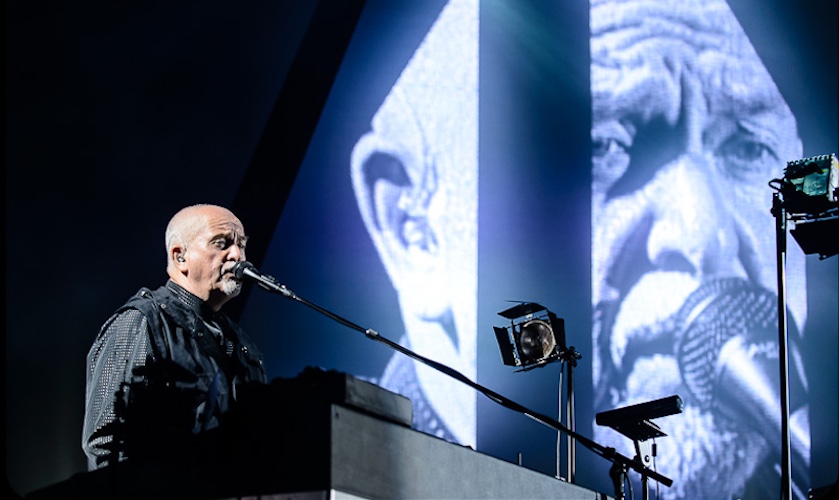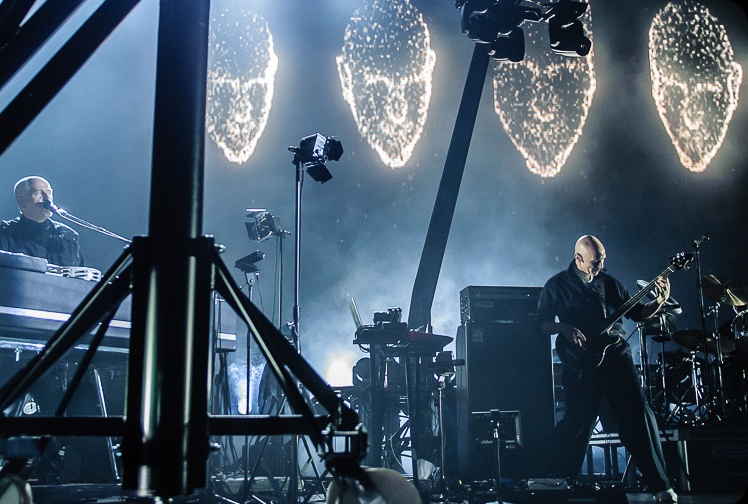
The master of prog pop does us the honour
Peter Gabriel is an absolute highlight in my musical experience. There are only a few musicians who so consistently combine music across cultures and genres with visual style and ideas. And then his music is simply brilliant, especially for us drummers….
For those of you not familiar with him or the music history of the 70s, here is a brief look back:
Peter Gabriel began his musical career with the band Genesis. More precisely, it began with The Garden Wall, one of two rival bands at Charterhouse School. Otherwise a rather reserved individual, Gabriel truly blossomed in music. His bandmate Tony Banks introduced him to Mike Rutherford (from the rival band The Anon), and together they formed the band Genesis. The name was an idea of their first manager, Tony Stratton Smith, and initially relegated them to the religious section of record shops. Nevertheless, they quickly earned a reputation as a highly creative band, thanks in large part to Gabriel’s unique melodies. After finding a congenial guitarist in Steve Hackett and a good (and stage fright-free) drummer in Phil Collins, the band’s unstoppable rise began. Peter Gabriel’s surreal stories, which he told between songs, and his even more surreal costume ideas quickly earned the band an eccentric reputation (their first performance in a boxing ring in Dublin, where Gabriel wore a red women’s dress combined with a fox mask, is legendary to this day). However, their quality as a concert and musically high-class rock band earned them a loyal, initially male-dominated and steadily growing fan base. At the provisional peak of their career, the live tour for their concept album ‘The Lamb Lies Down on Broadway’, Peter Gabriel left the band, surprising everyone.
He had many reasons for this: his marriage was in crisis due to the enormous pressure on the band, and he believed that the band’s style was increasingly veering towards success-oriented music in light of their success. Similar to Pink Floyd’s message in Welcome to the Machine, he also foresaw that the creativity of the 70s would be stifled by commercialism and greed, and that bands like Genesis in particular would be faced with the choice between making art or making money. He was to be proven right, especially about the latter.
As a private individual, Peter Gabriel began to take an interest in African culture and politics. Both continue to influence his music to this day: his albums feature musicians from all over the world, especially Africa, and his brands Real World (his world music record label) and WOMAD (World of Music, Art & Dance) paved the way for the successful and fair marketing of artists from the Third World, beyond the music industry dominated by MTV and large media corporations.
While Genesis initially continued to produce wonderful songs with A Trick of the Tail and Wind & Wuthering, Post-Gabriel Alben produzierten (bevor sie sie endgültig zur Mainstream-Rock-Variante von Phil Collins‘ Solokarriere mutierten, experimentierte Peter Gabriel mit Klangwelten. Inspiriert und unterstützt von Künstlern, wie Brian Eno und Robert Fripp waren Gabriels erste Soloalben ein Ausflug in unbekannte akustische (und psychische) Sphären.
It was only his commitment to WOMAD, which brought him to the brink of financial ruin, that made him rethink things. More linear structures and melodies found their way into his musical work. With SO, Peter Gabriel finally released an album that seemed to effortlessly bridge the gap between his more progressive side and danceable, groovy rhythms. The video Sledgehammer and its animation art, which remains unrivalled to this day, helped Aardman (Wallace & Gromit) achieve its breakthrough. Peter Gabriel has retained this style to this day: haunting harmonies, African rhythms and musical perfection, paired with visual ideas that continue to characterise his stage shows in particular. The highlight in this regard is his Secret World Tour, in which music and visuals merged in an unparalleled way, alternating between two stages.
My wife and I were lucky enough to experience this concert in Munich – the old Olympic Hall was a dignified and historic setting for an event that will long remain in the memories of all old (and new) fans of this artist.

Now somewhat older, Peter Gabriel finally gave in to pressure from his fans and launched the 25th Anniversary Tour of his successful album SO. Unlike many of his colleagues, this album was not simply remastered, but completed with a live recording of his breathtaking concert in Athens in 1986. SO DNA, another gem, presented fans with a unique idea.
For each song on the album, Gabriel’s team compiled a collection of demo versions of the songs in various stages of completion. Never before has it been possible to experience the creation of a song and an album so closely and so raw. The tour to mark the album’s anniversary was similar. The concert was divided into three parts: The beginning (with the lights on) consisted of simply orchestrated pieces, with the musicians gradually appearing and steadily building up the sound and dynamics. In the second part, the style became increasingly intense until finally the lights went out and the band literally exploded. The last part, the dessert, as Gabriel called it, was the complete album SO.
My wife and I were lucky enough to experience this concert in Munich – the old Olympic Hall was a dignified and historic setting for an event that will long remain in the memories of all old (and new) fans of this artist.
Share
Latest Posts
July 1, 2025
July 1, 2025
July 1, 2025




